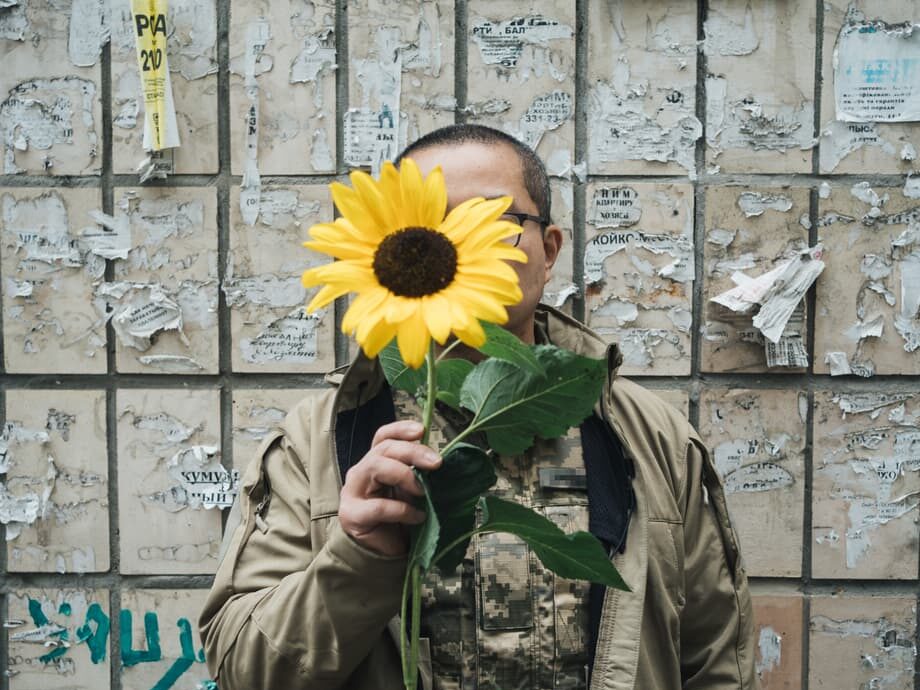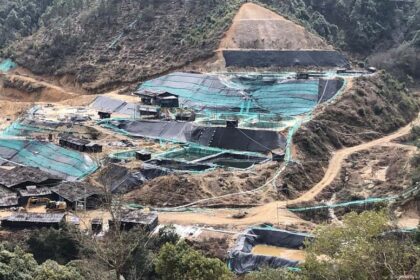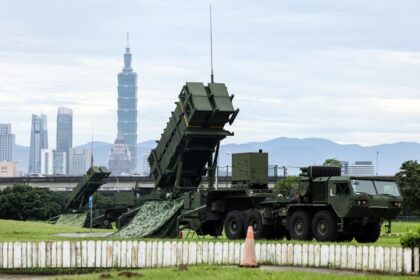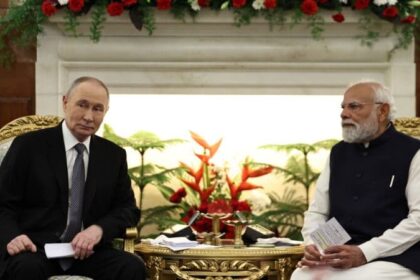A quiet cohort from China joins Ukraines fight
The July 8, 2024 missile strike that tore through the Okhmatdyt childrens hospital in Kyiv killed at least 43 people across Ukraine and shocked much of the world. Tim, a 43 year old Chinese national who had been delivering aid near Kyiv that day, rushed to the scene. He spent hours helping with recovery efforts in the debris of a childrens ward. The horror he witnessed pushed him from volunteer work to enlistment. Within weeks, he joined Ukraines armed forces.
- A quiet cohort from China joins Ukraines fight
- What turned sympathy into enlistment
- How many Chinese nationals are fighting, and on which side
- Inside the International Legion and foreign enlistment routes
- Risks, losses, and the cost of speaking out
- Information control and the battle for narratives
- Geopolitics made messier by individual choices
- Key Points
Tim first arrived in Ukraine in July 2023. He had been unemployed back home and dissatisfied with the political climate. He secured a business visa and traveled west. In China, he said he relied on VPN access to reach foreign media. He did not trust state outlets that portrayed Russia as a friend and Ukraine as the aggressor. In Ukraine he found a society willing to welcome him even as air raid sirens sounded and cruise missiles struck cities. He began to imagine a future where his wife and child could join him in Europe.
Now stationed in southern Ukraine, he works on drones and engineering tasks. The skills are hands on and in constant demand near the front line. They are also safer than infantry service but still carry real risk. He believes his decision has meaning that his earlier life lacked.
Tim, now a member of a Ukrainian unit focused on drones, described his motivation in simple terms.
“I wanted to do something more meaningful.”
There are about 8,000 foreign volunteers serving in Ukraines land forces. Only a few dozen are believed to be from mainland China. Foreigners can join regular Ukrainian units under contract or serve in the International Legion, a formation created in 2022 to organize volunteers from abroad. Chinese public opinion, shaped by state media that leans toward Moscow, generally favors Russia. Yet a small number of Chinese citizens have taken the opposite path and chosen to fight for Ukraine.
What turned sympathy into enlistment
War often turns on personal moments. For many foreigners, major strikes on civilians become inflection points. The blast at a childrens hospital in Kyiv was one such moment. For Tim, it reframed the war not as a distant conflict but as a direct attack on the defenseless. He decided the right response was to put on a uniform.
Tims path from aid driver to soldier
Before enlisting, Tim spent months ferrying donations and medical supplies to cities under fire. He made contacts with local volunteers and aid organizations and saw how regular people adapted to life under attack. He heard stories of first responders pulling survivors from rubble while missiles kept coming. The experience stripped away any distance he felt as a visitor. After the hospital strike, he told friends he would seek a formal role in the army and use his technical skills where they counted.
He had grown disillusioned with the direction of his home country. News and social media were tightly controlled. Friends told him to be careful with what he read or shared. He kept using VPN access to see videos and reports from outside the firewall. He contrasted those with what he saw in Ukrainian cities. The warmth he encountered from strangers, even during blackouts and air raid alerts, made a deep impression.
Fans search for meaning and safety
Fan, another Chinese volunteer, left home after business setbacks and rising debt. He wanted to be useful. Online, he looked for clear steps on how to join and found guidance, even through an AI assistant, about paths into the International Legion and support roles. He reached Ukraine and started as a drone operator. The language barrier made life difficult on the line, so he later shifted to guarding a warehouse while learning Ukrainian. Fan says he is not outspoken or interested in political theory. He simply felt the room for free expression at home had narrowed. He did not want his child to grow up watching bloggers hauled in by police for comments that could be construed as dissent.
How many Chinese nationals are fighting, and on which side
Only a small number of mainland Chinese citizens serve with Ukrainian forces, likely a few dozen at most. The picture is different on the Russian side. In April 2025, President Volodymyr Zelensky said Ukrainian troops had captured two Chinese nationals fighting for Russia in Donetsk. He said Ukraine had identified more than 150 Chinese citizens serving under contract in Russian units and that many were recruited through social media. Ukrainian officials described a process in which Chinese men traveled to Moscow, passed brief medical checks, trained for one to two months, and were sent to fight.
In multiple appearances, Zelensky used these events to appeal to partners for aid and to call for clarity from Beijing. He argued that Russia was drawing China into the war and asked Western allies to pay attention to the trend. During one briefing, he delivered a pointed message.
“China is now militarily supporting Russia, and the United States should pay attention.”
China rejected the notion that its government is supplying troops or directing citizens to fight. The Foreign Ministry has said that China is not a party to the conflict. Beijing instructs its citizens to avoid conflict zones and not take part in military operations. Lin Jian, a spokesperson for the Ministry of Foreign Affairs, summarized the position this way.
“China is not a party to the Ukrainian crisis. We ask our citizens to stay away from conflict zones and not take part in military operations.”
U.S. officials describe the Chinese nationals on Russias side as mercenaries or paid recruits with no direct link to the state. Senior officers have said that the two men captured in eastern Ukraine were of Chinese origin and that there are more than one hundred such recruits on the Russian side. American assessments say those fighters have minimal training and have not changed the battlefield. At the same time, Washington accuses China of enabling Russias war industry by supplying machine tools, microelectronics, and components with dual civilian and military uses.
Inside the International Legion and foreign enlistment routes
Ukraine set up the International Legion in early 2022 to coordinate foreign volunteers. The Legion is not for tourists or war adventurers. It screens applicants, vets past service, and checks criminal records. Volunteers who pass must sign contracts, pass medical assessments, and commit to a unit. Training times vary based on prior experience. Many who lack strong language skills begin in support roles. Others with battlefield experience may reach the line after additional instruction on Ukrainian procedures and command systems.
Foreigners can also serve in regular units of the Ukrainian army. Some bring specialized skills, such as drone operations, communications, engineering, or language support. Pay, benefits, and leave are governed by contract and Ukrainian law. The state provides basic kit, but many volunteers still fundraise for better gear.
Drone warfare has expanded so quickly that units constantly recruit operators and technicians. Soldiers use first person view drones to destroy armored vehicles, drop munitions, or scout Russian positions. Engineers work to harden drones against jamming and create field modifications. Volunteers with technical backgrounds can be valuable even if their Ukrainian is limited, provided they have a translator or bilingual teammates.
Language remains a major hurdle. Units blend Ukrainians and foreigners, and not all commands or safety briefings are easily translated. Many volunteers study Ukrainian in their downtime. The learning curve can be steep, and commanders often reassign volunteers from combat roles to logistics or guard duties if language poses a risk.
Risks, losses, and the cost of speaking out
The dangers are real. In 2024, reports circulated of a 29 year old Chinese volunteer, Peng Chenliang, killed while serving in the International Legion. A Presbyterian pastor in Taipei, Huang Chunsheng, who had contact with Taiwanese volunteers in the same cluster of units, said Peng wanted to be buried in a free Ukraine under Taiwans national flag. Huang emphasized Pengs strong opposition to authoritarian rule.
“He wished to be buried in a free Ukraine under Taiwans national flag.”
Friends said Peng had been detained in China for months over posts that criticized Russia and the ruling party, and that he was later defrauded by a fellow Chinese national after arriving in Ukraine. His story filtered through volunteer networks and church contacts in Taiwan. It underscored how foreign recruits can be isolated, short of cash, and vulnerable to scams even before they reach the front line.
Chinese volunteers who support Ukraine also worry about attention from authorities back home. Several said police questioned family members after their enlistment. Returning to China could bring legal exposure. Volunteers adopt nicknames and avoid sharing details that could identify relatives. For many, building a life in Europe is not only a personal dream but also a safety plan.
Information control and the battle for narratives
The war has spilled onto Chinese social media platforms. Videos of Chinese citizens serving with Russian units have circulated on Douyin, showing recruits at training grounds, under artillery fire, and in field camps. Ukrainian intelligence has claimed that Chinese recruits often cite debt, unemployment, or a search for quick earnings as reasons for enlisting with Russia. Some reportedly pay intermediaries to arrange contracts and travel. The recruiters hold out the promise of steady income, but conditions can be harsh and communication difficult.
Ukraine has highlighted the presence of Chinese fighters with Russia to draw global attention and to pressure Beijing to rein in private recruitment. Kyiv sees propaganda value in publicizing Chinese nationals among captured soldiers. For its part, Beijing repeats that citizens who went to the battlefield did so on their own, and it urges Chinese nationals to avoid war zones.
The debate touches on a sensitive area of international law. A mercenary is generally defined as someone who is recruited to fight, motivated by private gain, and not integrated into a states armed forces. Many countries deny mercenaries prisoner of war protections. Volunteers serving under contract in a states military, even if foreign, are usually treated as lawful combatants. The distinction matters for prisoners, and it shapes how governments talk about citizens found in foreign armies.
Geopolitics made messier by individual choices
China and Russia describe their partnership as having no limits. Trade between the two has surged since 2022, including dual use goods that help Russia maintain its war production. U.S. officials say Chinese companies have supplied machine tools, drone components, engines, and microelectronics that feed Russias arms factories. Washington has sanctioned several Chinese firms and warned Beijing that such support carries diplomatic costs. At the same time, there is no confirmation that China has deployed combat units to Ukraine. American assessments say the Chinese nationals fighting for Russia are mercenaries, not official troops.
Against that backdrop, the existence of even a small number of Chinese volunteers fighting for Ukraine complicates the narrative. It reminds observers that public opinion inside China is not uniform. Censorship shapes what people can see and say, yet personal convictions still lead some to take risks. For Tim and Fan, the war is a test of values as much as a military contest. They say they want to prove that many Chinese people value freedom and compassion.
Tim hopes to move his family to Europe and keep working in roles that save lives. He also wants outsiders to separate a countrys government from its people. He offered a plea he hopes readers will consider.
“Do not give up on China. There are many good people, and many positive ideas, in my homeland.”
Key Points
- A small number of mainland Chinese citizens have joined Ukrainian forces, likely only a few dozen, while about 8,000 foreigners serve in Ukraines land forces.
- Tim, a 43 year old Chinese volunteer, enlisted after helping at Kyivs Okhmatdyt childrens hospital following the July 8, 2024 missile strike, and now works on drones in southern Ukraine.
- Fan, another Chinese volunteer, left China after business failures and debt, initially operated drones, and now guards a warehouse while learning Ukrainian.
- Ukraine says it captured two Chinese nationals fighting for Russia and has identified at least 150 more under contract in Russian units.
- President Zelensky has urged partners to pay attention to Chinese nationals in Russian ranks, while China says it is not a party to the war and tells citizens to avoid conflict zones.
- U.S. officials describe Chinese fighters on Russias side as mercenaries with no direct link to the Chinese state, and say their battlefield effect is limited.
- Beijing maintains close economic ties with Moscow and supplies dual use goods, drawing U.S. sanctions on Chinese firms linked to Russias war effort.
- Reports say a 29 year old Chinese member of Ukraines International Legion, Peng Chenliang, was killed in action in 2024, highlighting the risks for volunteers.
- Chinese volunteers who back Ukraine fear legal or police pressure at home, and some plan to resettle in Europe for safety.
- Social media in China has featured videos of Chinese recruits serving with Russia, with many citing economic motives, which Ukraine uses to press Beijing diplomatically.












